
Joined chest attributed to John Clawson or an apprentice, Providence, Rhode Island, 1650–1680. Red oak. H. 31 1/4", W. 52", D. 24 1/4". (Courtesy, Rhode Island Historical Society.) Brackets are missing at the front.

Detail of a tabled front panel and ogee molding on a muntin on the chest illustrated in fig. 1.
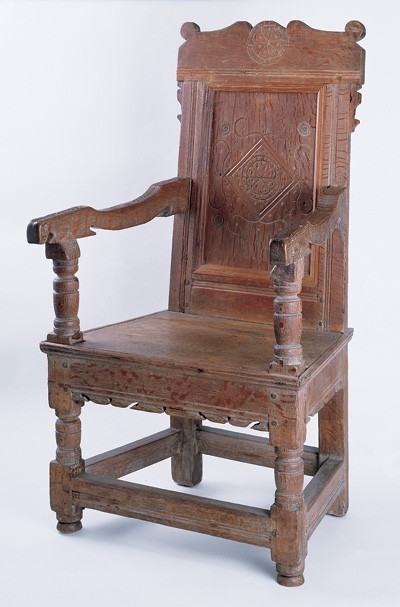
Joined great chair, probably Providence, Rhode Island, 1660–1680. Oak. H. 437/8", W. 24", D. 18". (Courtesy, National Society of the Colonial Dames of America in the Commonwealth of Massachusetts, Martin House Farm, Swansea; photo, Gavin Ashworth.) This chair descended in the Cole family of Rehoboth and Swansea.
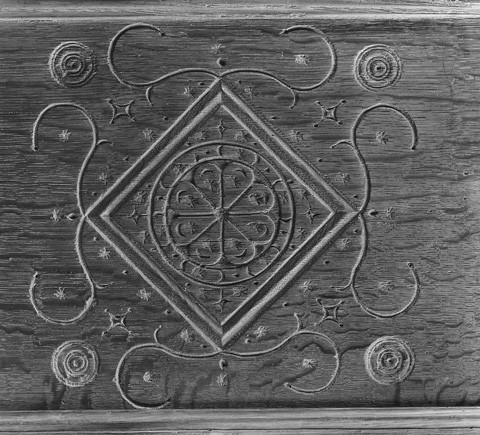
Detail of the back panel of the chair illustrated in fig. 3. (Photo, Gavin Ashworth.)
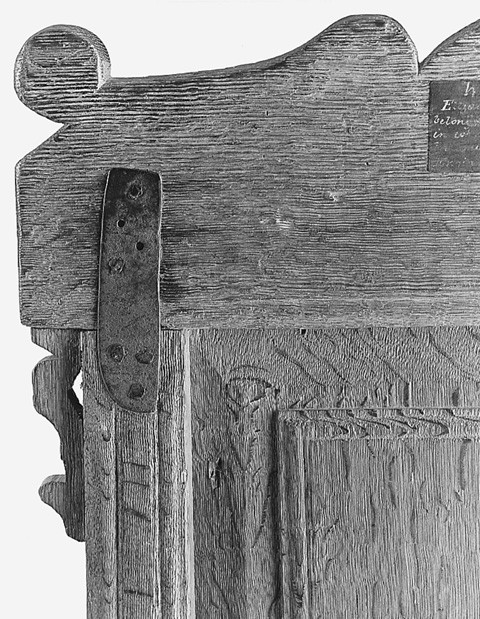
Detail of the reverse of the back panel of the chair illustrated in in fig. 3. (Photo, Gavin Ashworth.)
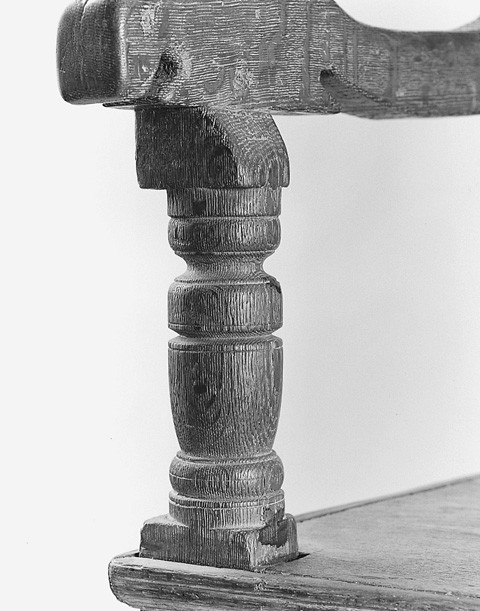
Detail of the upper turning on the front post of the chair illustrated in fig. 3. (Photo, Gavin Ashworth.)

Joined chest with drawer, probably Providence, Rhode Island, 1650–1680. Red oak, chestnut, white pine and maple. H. 271/2", W. 49", D. 201/4". (Courtesy, Rhode Island Historical Society, bequest of William I. Cranston in memory of his father, mother, wife, and brothers Raymond E. Cranston and Winthrop M. Cranston; photo, Gavin Ashworth.)

Detail of a carved panel on the façade of the joined chest illustrated in fig. 7. (Photo, Gavin Ashworth.)
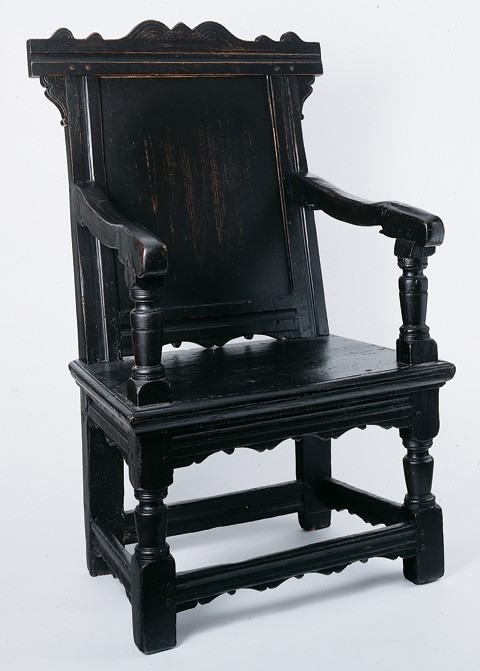
Joined great chair, Plymouth County, Massachusetts, 1640–1690. Oak and pine. H. 44 1/4", W. 28 1/4", D. 22". (Private collection; photo, Gavin Ashworth.) This chair descended in the Burgess family of Duxbury, Sandwich, Yarmouth, and Rochester. The upper back posts, back panel, brackets, and crest rail are restored.
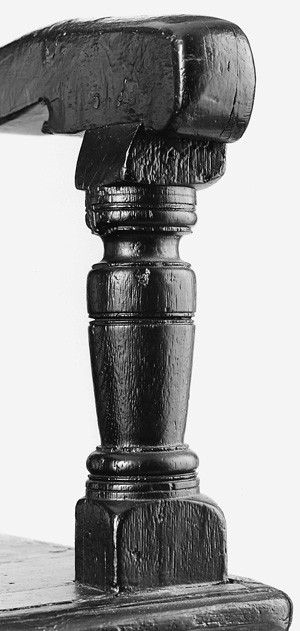
Detail of upper turning on the front post of the chair illustrated in fig. 9. (Photo, Gavin Ashworth.)
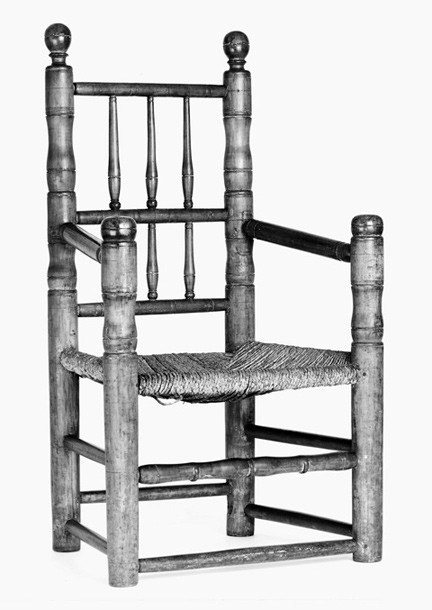
Turned great chair, probably Kingston, Rhode Island, 1670–1710. Maple. H. 43 1/8", W. 24 5/8", D. 18". (Courtesy, Winterthur Museum.) This chair descended in the Case and Clarke families of Westerly and Kingston.
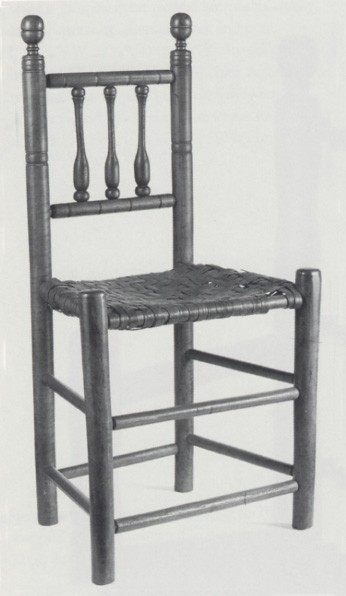
Turned chair, probably Kingston, Rhode Island, 1680–1720. Maple, red oak, and ash. H. 39 1/8", W. 21", D. 14 1/2". (Courtesy, Rhode Island School of Design; gift in memory of Mercy Congden Brown by her four grandaughters; photo by Erik Gould.) This chair descended in the Congden or Brown family of South Kingston. www.risd.edu
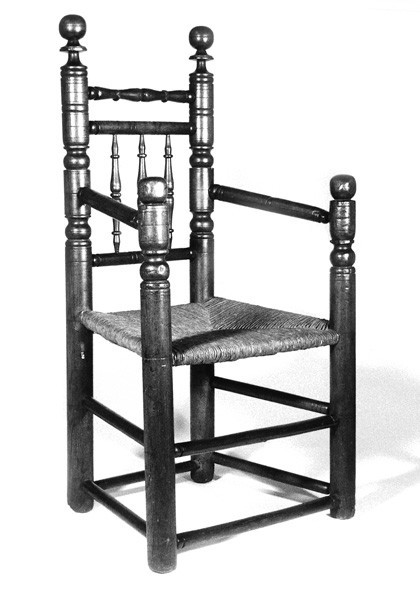
Turned great chair, probably Rhode Island, 1650–1700. Ash. H. 42", W. 24", D. 15". (Courtesy, Connecticut Historical Society; bequest of George Dudley Seymour.)
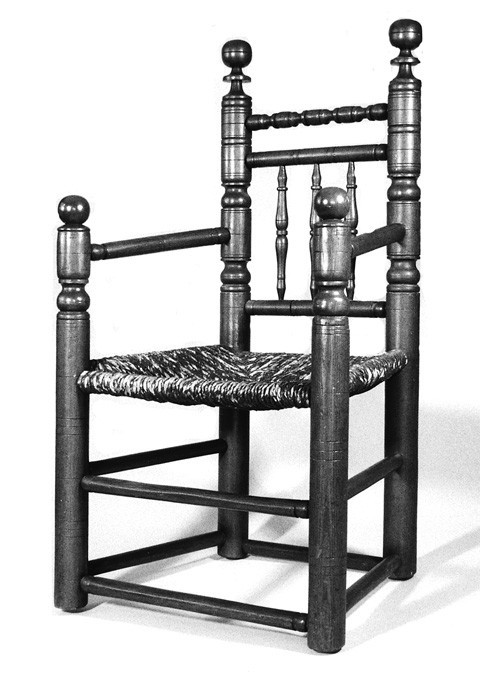
Turned great chair, probably Rhode Island, 1650–1700. Ash. H. 41", W.24 1/2", D. 21". (Private collection; photo, Robert F. Trent.)
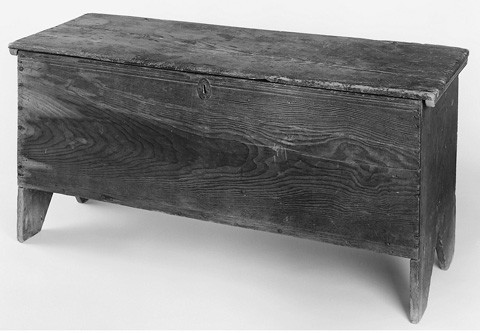
Board chest, Rhode Island, 1686. Pine and chestnut. H. 23 1/8", W. 50 1/2", D. 19". (Courtesy, Rhode Island School of Design, gift of Dr. and Mrs. William Colaiace; photo, Gavin Ashworth.) This chest descended in either the Remington or Rhodes family of Pawtucket. www.risd.edu
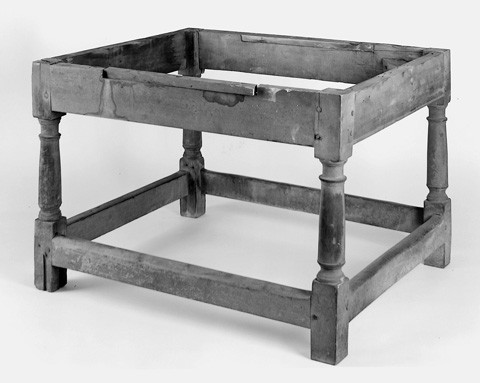
Joined table attributed to Christopher Townsend, Newport, Rhode Island, 1739–1749. Maple and white pine. H. 28 1/2", W. 42", D. 35 3/4". (Courtesy, State of Rhode Island and Providence Plantations; photo, Gavin Ashworth.) This table is one of a pair. The tops and feet are missing on both. The illustrated example has traces of blue paint. Christopher Townsend was the principal joiner involved in the construction of the Colony House during the mid-1740s.

Detail of a leg on the table illustrated in fig. 16. (Photo, Gavin Ashworth.)

Detail of a newel post in the Colony House showing the same turning sequences found on the legs of the table illustrated in figs. 16 and 17.

Joined table, possibly Newport,Rhode Island, 1720–1750. Maple. H. 217/8", W. 201/2", D. 145/8". (Courtesy, Winterthur Museum.)
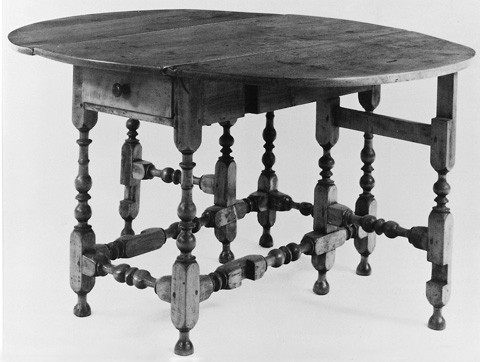
Oval leaf table, possibly Newport, Rhode Island, 1720–1750. Woods and dimensions unrecorded. (Courtesy, Redwood Library, Newport, Rhode Island.) This table descended in the Easton family. Its present location is unknown.
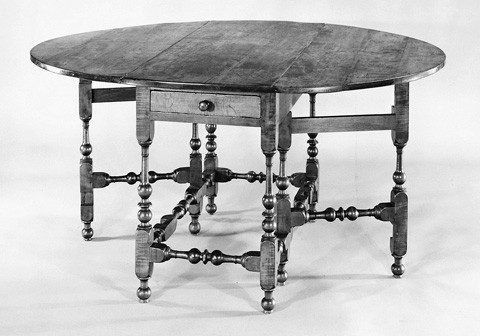
Oval leaf table, possibly Newport, Rhode Island, 1720–1750. Maple. H. 28 1/2", W. 47 3/4", D. 57 1/4". (Courtesy, Chipstone Foundation.)
